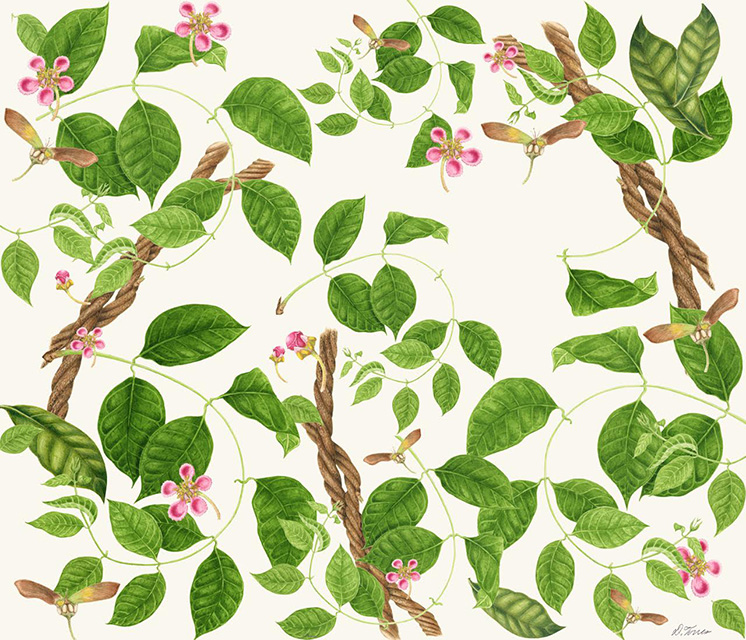
Caapi Dreams by Donna Torres
This virtual exhibition is taking you on a tour through a catalog of artworks, enriched by the legacy of the indigenous shamanic culture of the Americas and the traditions, inspired by the transformed state of consciousness during the intensely spirited ayahuasca journey.
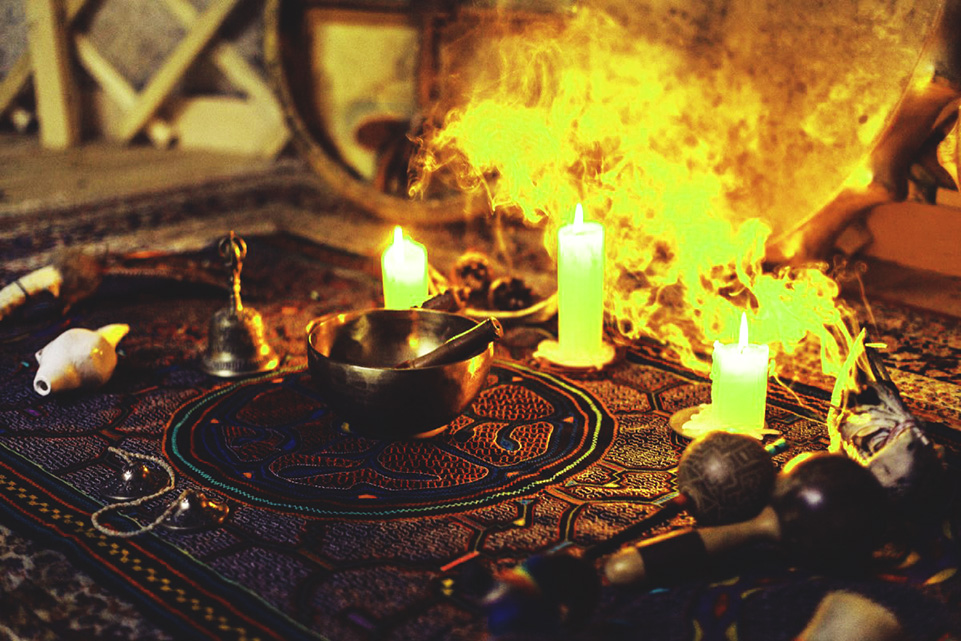
Ayahuasca ceremony
The earliest accounts of people experiencing altered states of mind to get an enriched understanding of the surrounding world, which then they would pass on as spiritual visions to the external, were first recognized in the religious traditions of the indigenous people in South America. This so-called ‘entry’ into another world is referenced in the historic accounts as sensory overload through the use of psychotropic plants like ayahuasca and mindful practices within a body such as meditation hyperventilation, chanting, drumming, and so on. From what we know, the means to gaining a higher understanding are very culture and nation-specific, however, the purpose for these visionary artists have become the same- to point the viewer to the intensely visual nature of their experiences and express them in a creative visual ‘output’, as referred in Robert Sirko’s work- “The Artists and The Shaman: Seen and Unseen Worlds”.
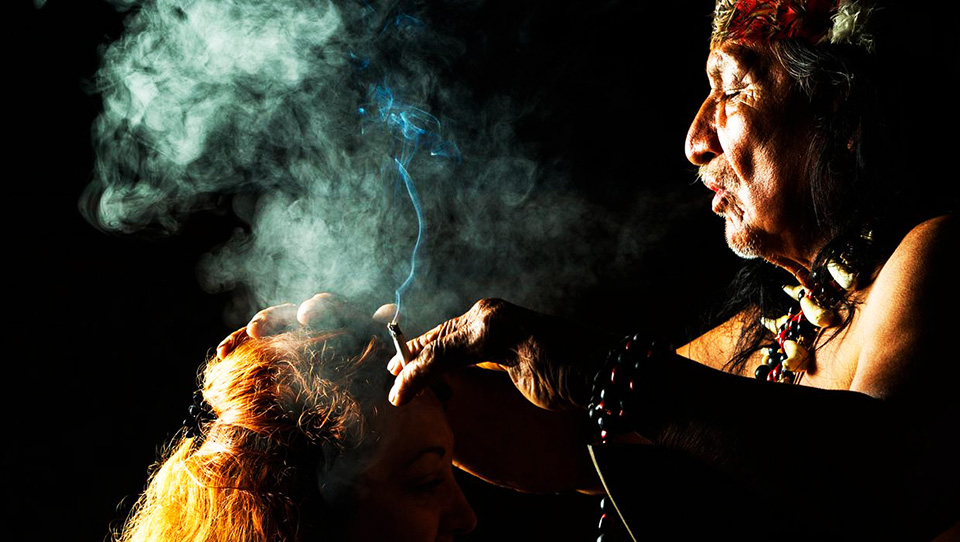
Tribal healing
Prompted and enhanced visions by ayahuasca are known to bring about healing to the artists and their spectators. Nothing strikes more in this following virtual exhibition than the exoticism and the fantastic vibrancy of the artworks associated with the induced spiritual enlightenment from the healing plant. What we describe today as fantastic art, originated in religious ceremonies in the past, and focused on helping the community by sending a message with healing power.
Should we associate ayahuasca-induced art with ancient magic?
How and what is exactly is the overlap between a “shaman” and “visionary artist”, Robert Sirko explains in beautifully versed detail in his essay, which explores the religious connections and their artistic symbolism of the two. The author also makes a parallel between the common reference of the term ‘visionary art’ in the works of the modern-day art movement known as Surrealism.
But should we actually attempt to dissociate visionary artists from the shamanic perspective of ayahuasca ceremonies, practiced similarly in the past to achieve a complete spiritual uplifting and to perform religious healing acts on the spectators and the community?
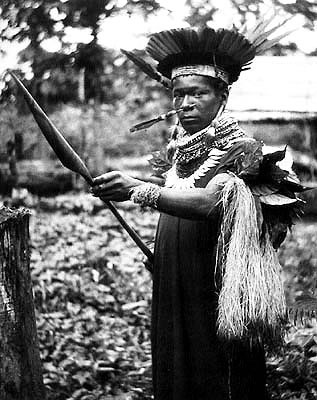
Indigenous Shaman
As viewers, it is up to us to decide whether we need to dismiss the connection between the “sacred plants” in modern artworks and the oldest form of religious practice known to humanity- Shamanism. The main message for this virtual exhibition is to explore the early connections of ayahuasca and art and to remind you to stay open to the larger understanding of the visionary artists, who are experiencing and portraying their personal and deeply intense spiritual experiences through spectacular painting creations. We also ought to recognize the long historical and cultural influences of plant teachers on the expression of all of the following ayahuasca artists and how different plant healing practices in their experience shaped their unique artistic expression on canvas. By looking at the detail of the works in the virtual exhibition, you are hopefully going to fulfill our goal of experiencing ultimate freedom to “ascend to the sky or descend to the underworld” which is given by the ayahuasca plant, but also discover your own fantastical translation of a mystical world in color and higher visions.
Pablo Amaringo
’Visionary artist’ has become a synonymous term for the name of Pablo Amaringo and his voluminous work in this dimension- influenced largely by his ayahuasca experiences and earlier life shamanic practices. Amaringo’s paintings are detailed recollections of his altered visions, conceived during authentic religious ceremonies, accompanied by his accounts of music from religious songs and chants. The most unique feature of Pablo’s art, which most academic critics recognize to this day, was his ability to render a fantastic recall of images during his transcendental experience, which seems almost magical and overpowered with emotion to the viewer of the painting. There are countless mythological references in his pieces that hold an invaluable historical account of indigenous symbols and their meanings.
Fighting Through Tingunas
In this work by Pablo, you will see a detailed struggle in a conflict between shamans and ancient magus in a trance experience.
Recovering a Young Man Kidnapped by a Yaruruna
Another distinguishing aspect of Amaringo’s art is his pronounced use of vivid colors, typical for South and Central American art in his epoch.
Anderson Debernardi
In Sirko’s essay tracking the roots of ayahuasca experiences on visual artists, we see the name of Anderson Debernardi- famous student and heir of Don Pablo Amaringo- depicting the cosmic dimensions of great beauty. Debernardi is heavily influenced by the style of his master but with his paintings, he goes into more refined illustration-like detail which we can easily see in these two pieces. The medium for him sets the tone in two directions: depicting the forest or his visions.
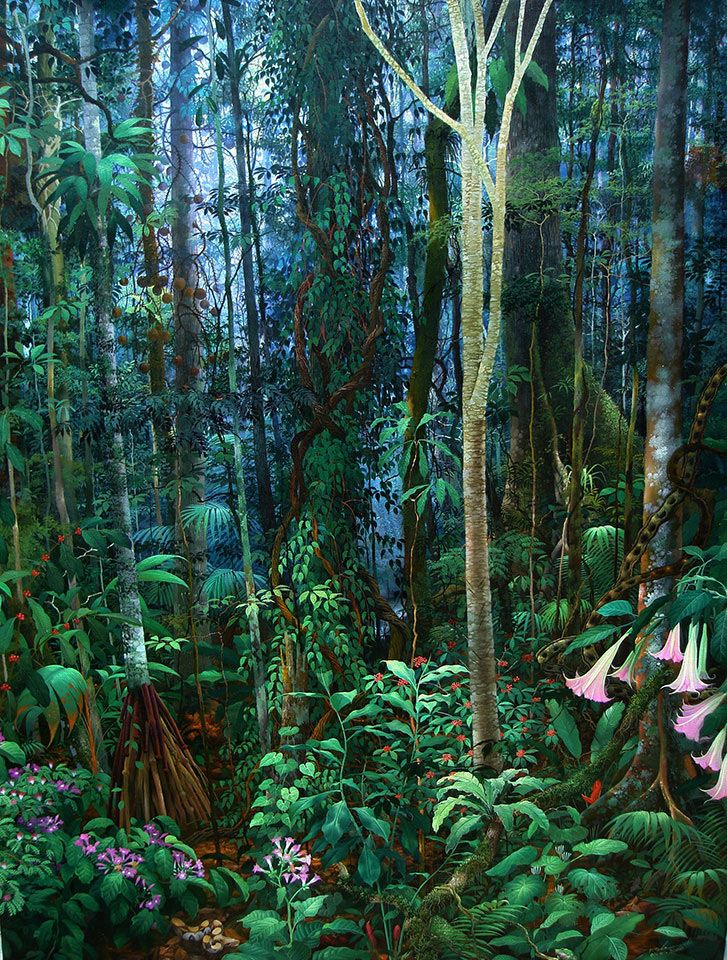
Power Healing Plants
The ethereal view of Debernardi’s forest allows the viewer into a fantastically wild realm beyond one’s imagination. The magical quality of his illustrations is constantly reminding you of a real seen world, and an unseen one. Sirko makes a parallel between the Amazon indigenous people and their belief realms pointing to the internal world and the exterior of the forest setting.
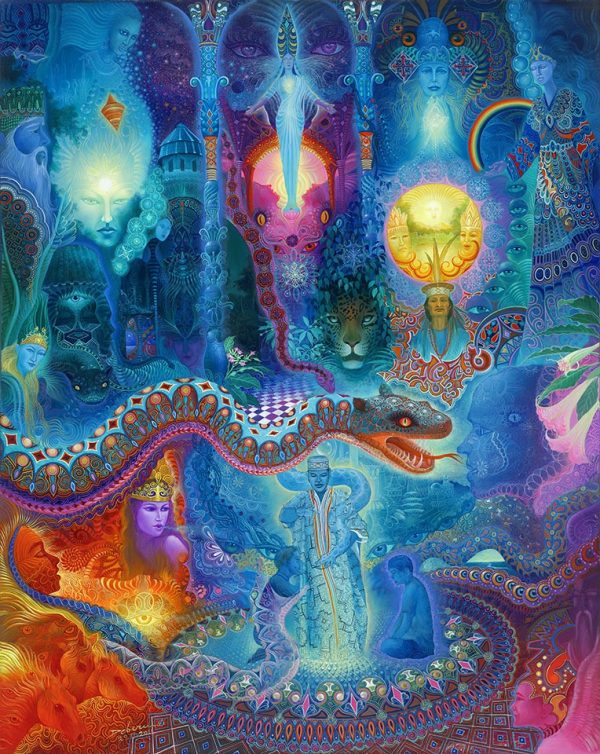
Magic Serpents
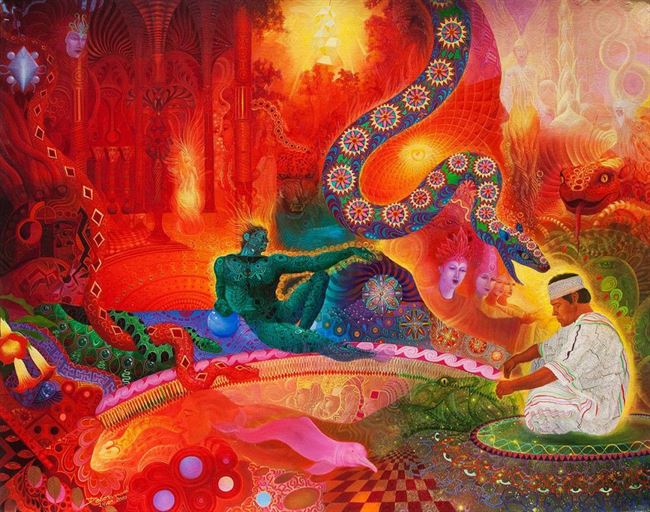
Opposite
The work is done in oils and invites you in through the idea of shared space and patterned surfaces, creating a feeling of the continuum. What is unrepeated in these artworks is the unique visions of the artist, which are depicted ‘through the lens of spiritual grace’- which spectators can never see and experience in such realistic detail with any other form of art.
Alex Sastoque
Within the virtual exhibition of supernatural art, we appreciate Alex Sastoque as the youngest member of this community of visionary artists. Alex’s narrative is directly influenced by the shamanic rituals of the past, while his technique in depicting lighting and rich color palettes is transferable to that of his scholarly master- by Ernst Fuchs.
Transformacion Chamanica
In this breathtaking work by Sastoque, you can see great attention to modeling and creating less intense color patterns. The background comes across as darker, which is contrasted against a color-saturated foreground. Alex has sourced inspiration for his work from participating in ceremonies exploring the spiritual journey of ayahuasca, and the healing creative power it gives to the artist.
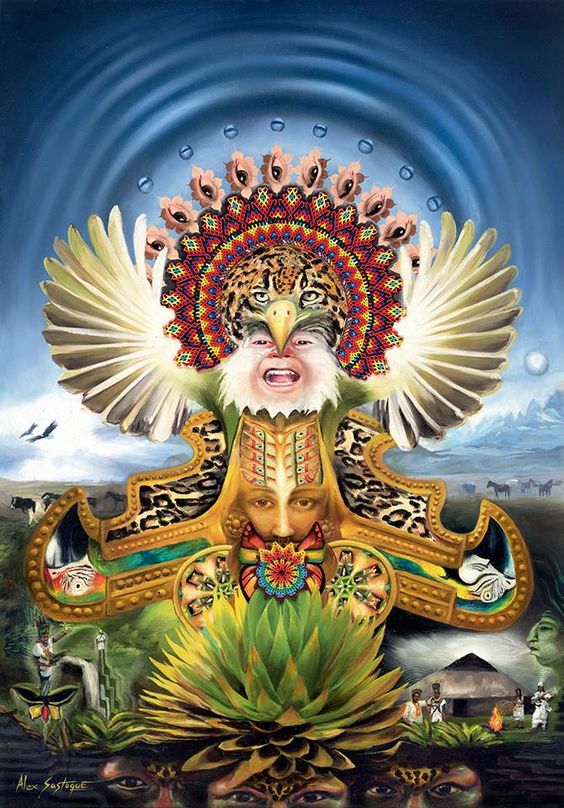
Dawn- Amanecer
Sastoque is also relating to the shamanic connection of the ayahuasca rituals which are depicted in his fantastic visions of color and symbols. The eye of God can be seen as a recurring element in his paintings, creating a strong spiritual connotation with finding happiness, internal bliss, and healing in the trance states experienced with ayahuasca.
Ayahuasca+Chargo
Something different in this virtual exhibition is Sastoque’s work which goes beyond the traditional means of oil on canvas. This painting is combining computer imagery with canvas in a butterfly illustration, in which center you can see a miniature computer screen playing a looped animation.
Rick Harlow
In his essay, Sirko features famous ayahuasca artists like Rick Harlow, who talks about the deeper understanding of his creations thanks to the elevated trance state experienced under the influence of the sacred plant. Harlow uses several masterly techniques known as splattering and dripping to depict his spiritual journey as more of a space in time, and a realistic view of the surroundings.
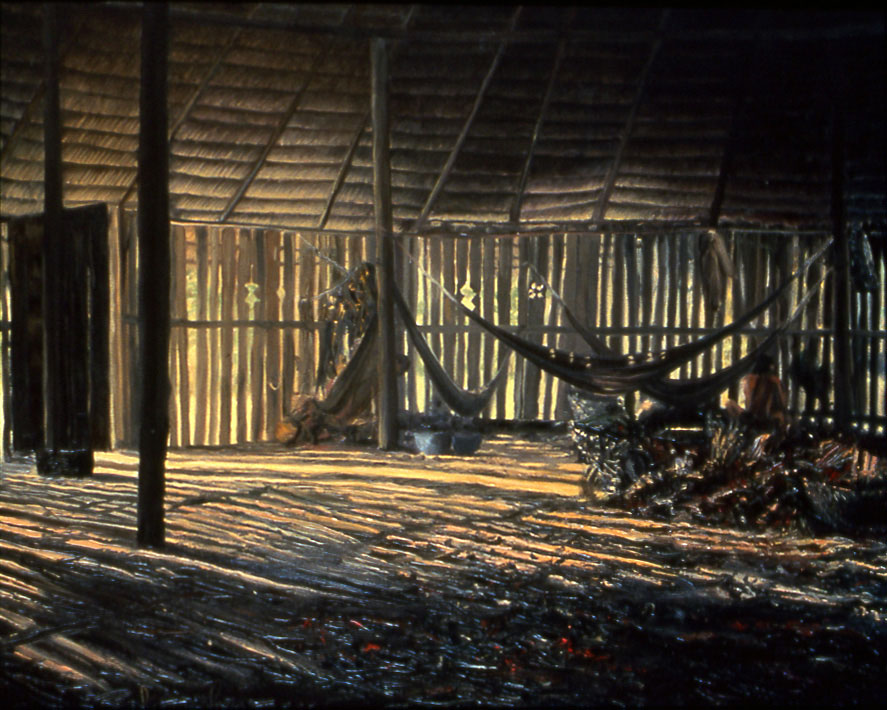
Yucuna Maloca
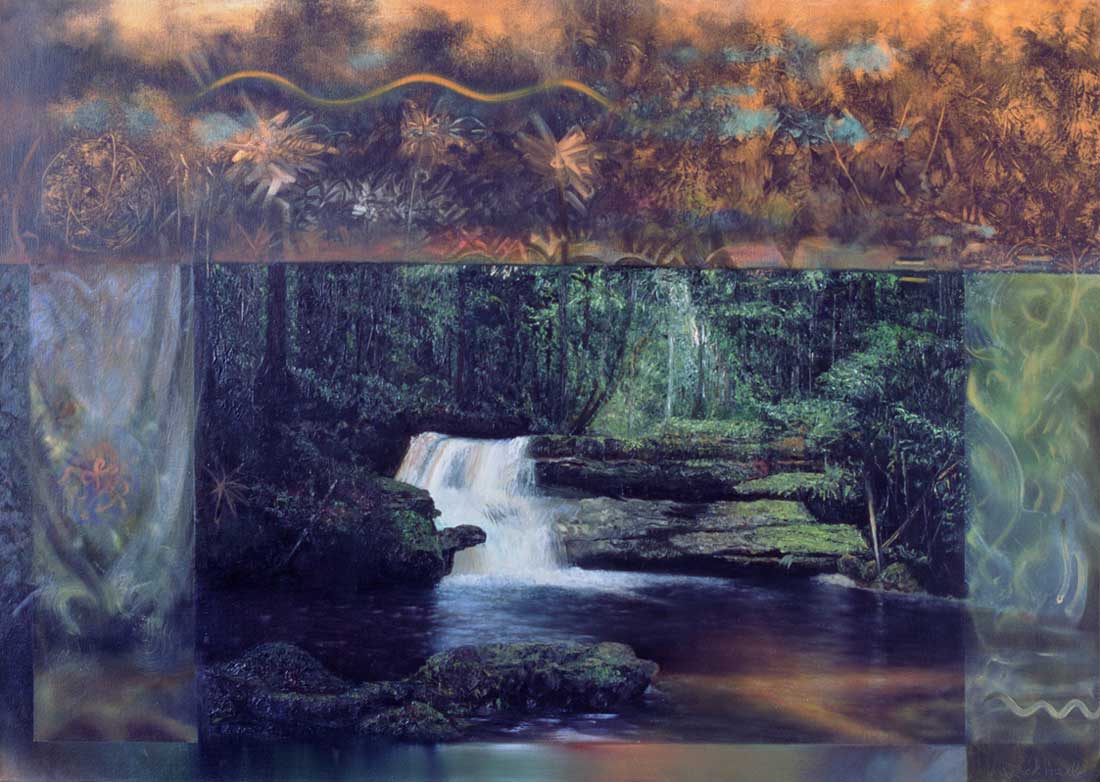
Falls Near Jirajirimo
This is the masterpiece painting the transformation the visual artist experiences in his journey between both worlds- seen and unseen – physical and metaphysical.
Donna Torres
As a last feature in the art exhibition by Sirko, we see the name of Donna Torres as that of a lesser relationship to the work of the visionary artists discussed above. In Torres’ paintings, we see more of the everyday reality, which disappears quickly if you look closely for her vibrantly conveyed visions of new magical nature realms.
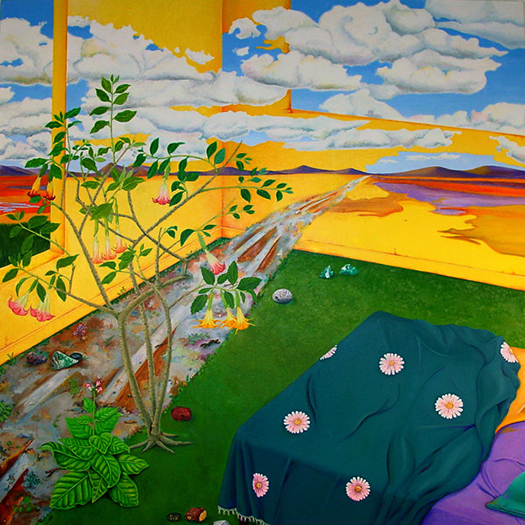
The Travelers
This piece is a juxtaposition between interior and exterior in a natural environment, which is seen in other works of this era, taking the viewer straight on a path to a trance-enriched state.
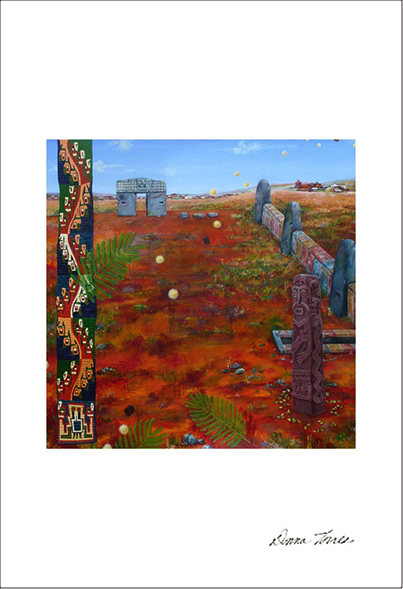
Unpacking History
The site of an archaeological dig in Bolivia, where Torres’s husband has done extensive work over the years. The influence of ancient structures, paraphernalia, and historical elements is evident in the landscape of this imagery. There are no clear connections between religious plant ceremonies and the artist’s interpretation of magical realms, which she connects to her spiritual journey whilst painting.
In this exhibition of artworks that both link and dissociate the visible and the invisible worlds under different trance states, we saw connections of the artworks with religious acts and shamanic ceremonies performed by indigenous American communities. We also speculated on the assisted experience of ayahuasca for some of these visionaries, who cite the sacred plant as the key source of their enlightenment and visions on canvas. How and what is the value of these influences on the paintings presented here, the viewer can decide based on their own understanding of the absolute. In this virtual catalog, we can definitely see the powerful message of nature and its healing power in the history of visual impressions and painted interpretations by some spectacular artists. Only they can be our medium between the Seen and the Unseen through their magical visionary creations in color.

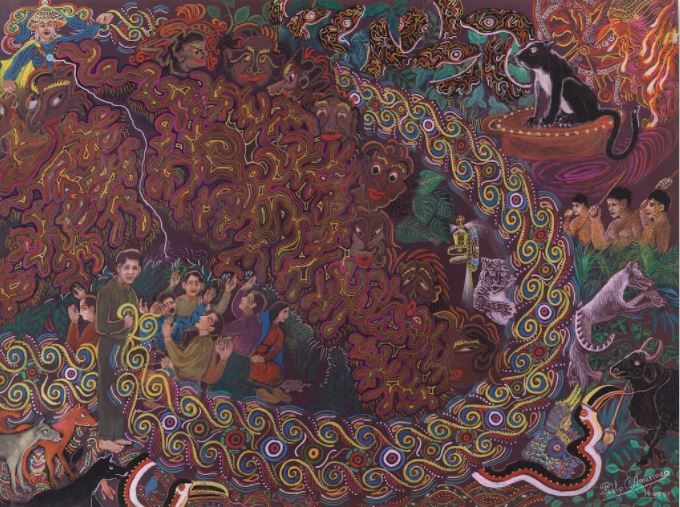
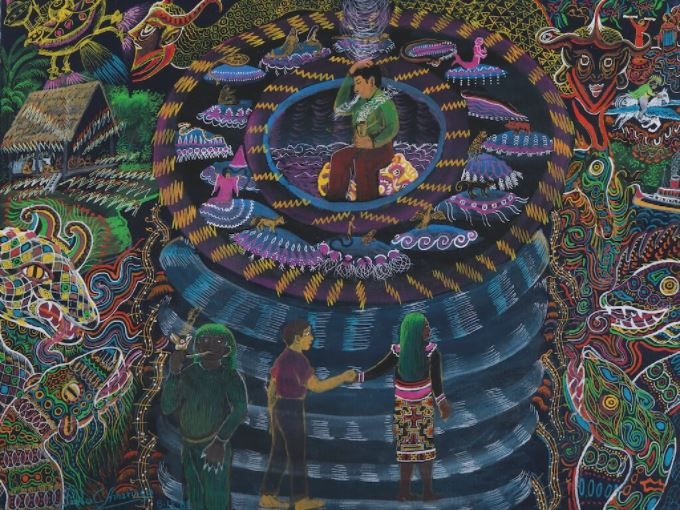
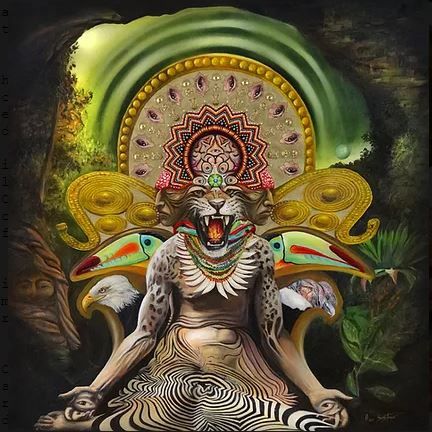
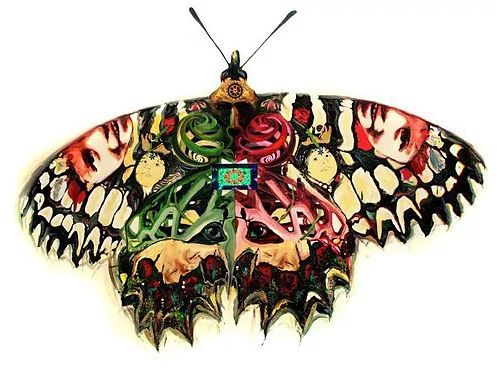
Please complete your information below to login.
Sign In
Create New Account